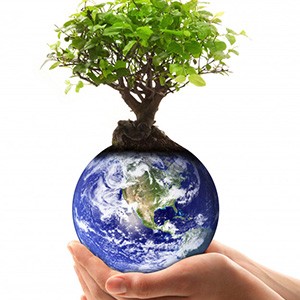
-
 Afrikaans
Afrikaans -
 Albanian
Albanian -
 Amharic
Amharic -
 Arabic
Arabic -
 Armenian
Armenian -
 Azerbaijani
Azerbaijani -
 Basque
Basque -
 Belarusian
Belarusian -
 Bengali
Bengali -
 Bosnian
Bosnian -
 Bulgarian
Bulgarian -
 Catalan
Catalan -
 Cebuano
Cebuano -
 China
China -
 China (Taiwan)
China (Taiwan) -
 Corsican
Corsican -
 Croatian
Croatian -
 Czech
Czech -
 Danish
Danish -
 Dutch
Dutch -
 English
English -
 Esperanto
Esperanto -
 Estonian
Estonian -
 Finnish
Finnish -
 French
French -
 Frisian
Frisian -
 Galician
Galician -
 Georgian
Georgian -
 German
German -
 Greek
Greek -
 Gujarati
Gujarati -
 Haitian Creole
Haitian Creole -
 hausa
hausa -
 hawaiian
hawaiian -
 Hebrew
Hebrew -
 Hindi
Hindi -
 Miao
Miao -
 Hungarian
Hungarian -
 Icelandic
Icelandic -
 igbo
igbo -
 Indonesian
Indonesian -
 irish
irish -
 Italian
Italian -
 Japanese
Japanese -
 Javanese
Javanese -
 Kannada
Kannada -
 kazakh
kazakh -
 Khmer
Khmer -
 Rwandese
Rwandese -
 Korean
Korean -
 Kurdish
Kurdish -
 Kyrgyz
Kyrgyz -
 Lao
Lao -
 Latin
Latin -
 Latvian
Latvian -
 Lithuanian
Lithuanian -
 Luxembourgish
Luxembourgish -
 Macedonian
Macedonian -
 Malgashi
Malgashi -
 Malay
Malay -
 Malayalam
Malayalam -
 Maltese
Maltese -
 Maori
Maori -
 Marathi
Marathi -
 Mongolian
Mongolian -
 Myanmar
Myanmar -
 Nepali
Nepali -
 Norwegian
Norwegian -
 Norwegian
Norwegian -
 Occitan
Occitan -
 Pashto
Pashto -
 Persian
Persian -
 Polish
Polish -
 Portuguese
Portuguese -
 Punjabi
Punjabi -
 Romanian
Romanian -
 Russian
Russian -
 Samoan
Samoan -
 Scottish Gaelic
Scottish Gaelic -
 Serbian
Serbian -
 Sesotho
Sesotho -
 Shona
Shona -
 Sindhi
Sindhi -
 Sinhala
Sinhala -
 Slovak
Slovak -
 Slovenian
Slovenian -
 Somali
Somali -
 Spanish
Spanish -
 Sundanese
Sundanese -
 Swahili
Swahili -
 Swedish
Swedish -
 Tagalog
Tagalog -
 Tajik
Tajik -
 Tamil
Tamil -
 Tatar
Tatar -
 Telugu
Telugu -
 Thai
Thai -
 Turkish
Turkish -
 Turkmen
Turkmen -
 Ukrainian
Ukrainian -
 Urdu
Urdu -
 Uighur
Uighur -
 Uzbek
Uzbek -
 Vietnamese
Vietnamese -
 Welsh
Welsh -
 Bantu
Bantu -
 Yiddish
Yiddish -
 Yoruba
Yoruba -
 Zulu
Zulu
Exploring the Impact of Mold on Indoor Air Quality and Health Risks
The Intriguing World of Mold Nature's Hidden Ally and Adversary
Mold, a type of fungus, plays a dual role in our ecosystem. While it can trigger allergies and deteriorate buildings, it also supports the recycling of nutrients in nature and has numerous applications in food production, medicine, and biotechnology. Understanding mold requires a closer look at its types, characteristics, and the impact it has on our lives.
Mold thrives in damp, warm, and humid environments. It reproduces by releasing spores into the air, which can settle on various surfaces to create colonies. The common varieties include Cladosporium, Penicillium, and Aspergillus, each with distinct characteristics and growth requirements. Mold is omnipresent; it can be found outdoors on decaying leaves and wood, and indoors in bathrooms, basements, and kitchens. Its ability to grow rapidly makes it a formidable presence in both natural and human-made environments.
One of the most fascinating characteristics of mold is its role in decomposition and nutrient cycling. In nature, molds break down organic matter, returning nutrients to the soil, which promotes plant growth and sustains ecosystems. This natural recycling process showcases the essential function of mold as a decomposer, highlighting its significance in maintaining environmental balance.
However, mold also presents challenges, especially in residential and commercial settings. Mold growth can lead to structural damage to buildings and can adversely affect indoor air quality. It can trigger allergic reactions and respiratory problems in sensitive individuals. The most common symptoms of mold exposure include sneezing, coughing, itchy eyes, and skin rashes. In some cases, prolonged exposure can lead to more serious health issues, particularly for people with compromised immune systems.
mold

Due to these concerns, mold remediation has become an essential part of property maintenance. Identifying and eliminating sources of moisture is the first step in mold control. This may involve repairs to leaks, improving ventilation, and using dehumidifiers in high-humidity areas. When mold is found, it’s crucial to address it promptly and thoroughly, which often requires professional assistance to ensure safe and effective removal.
Yet, despite its potential downsides, mold also has remarkable uses that can benefit humanity. One of the most significant contributions is in the medical field. The discovery of penicillin, derived from the Penicillium mold, revolutionized medicine and has saved countless lives. Moreover, molds are used in the production of a variety of food products, including cheeses and fermented goods. The blue mold in Roquefort cheese and the specific molds in soy sauce and miso are perfect examples of how molds enhance our culinary experiences.
Additionally, scientists are exploring the use of mold in environmental bioremediation. Certain molds can degrade pollutants and toxins, suggesting they could play a crucial role in cleaning contaminated environments. Research into mold’s applications in biotechnology is also burgeoning, with potential advancements in sustainable materials, enzymes, and biofuels derived from mold processes.
In conclusion, mold is a complex organism with both beneficial and detrimental effects on our lives and the environment. While it poses challenges in maintaining healthy indoor spaces, it is also a valuable ally in nature's ecosystem and various industries. Understanding mold's characteristics, managing its growth, and harnessing its beneficial properties can lead to a healthier environment and new innovations. As we delve deeper into the world of mold, it becomes clear that this humble fungus is intricately woven into the fabric of life on Earth, deserving both respect and caution.
Latest news
-
Exploring the Benefits of Top Hammer Drifter Rods for Enhanced Drilling PerformanceNewsJun.10,2025
-
High-Precision Fiberglass Winding Machine for GRP/FRP Pipe Production – Reliable & Efficient SolutionsNewsJun.10,2025
-
FRP Pipes & Fittings for Shipbuilding - Corrosion-Resistant & LightweightNewsJun.09,2025
-
Premium FRP Flooring Solutions Durable & Slip-ResistantNewsJun.09,2025
-
Premium Fiberglass Rectangular Tanks Durable & Lightweight SolutionNewsJun.09,2025
-
Tapered Drill String Design Guide Durable Performance & UsesNewsJun.09,2025









